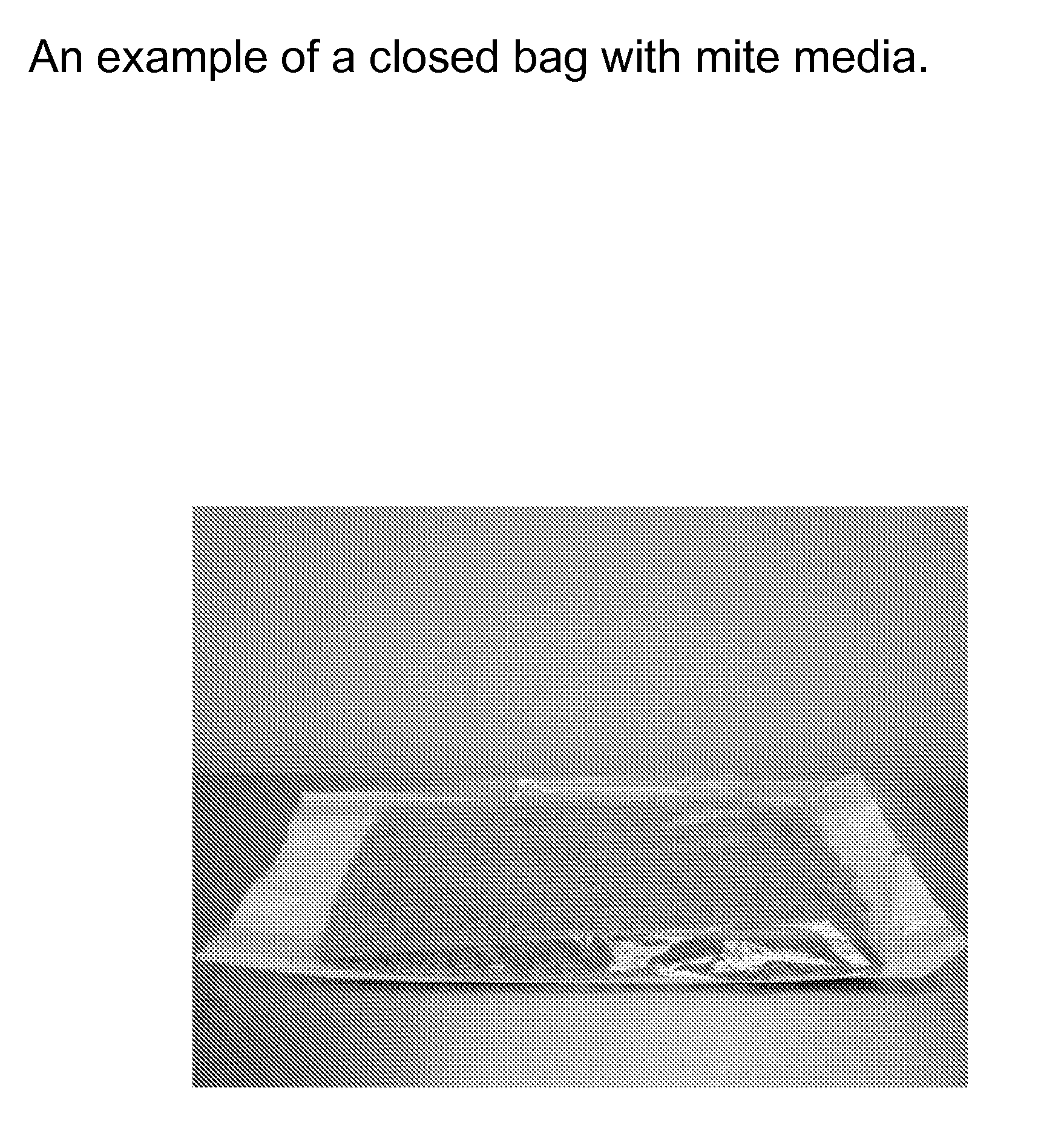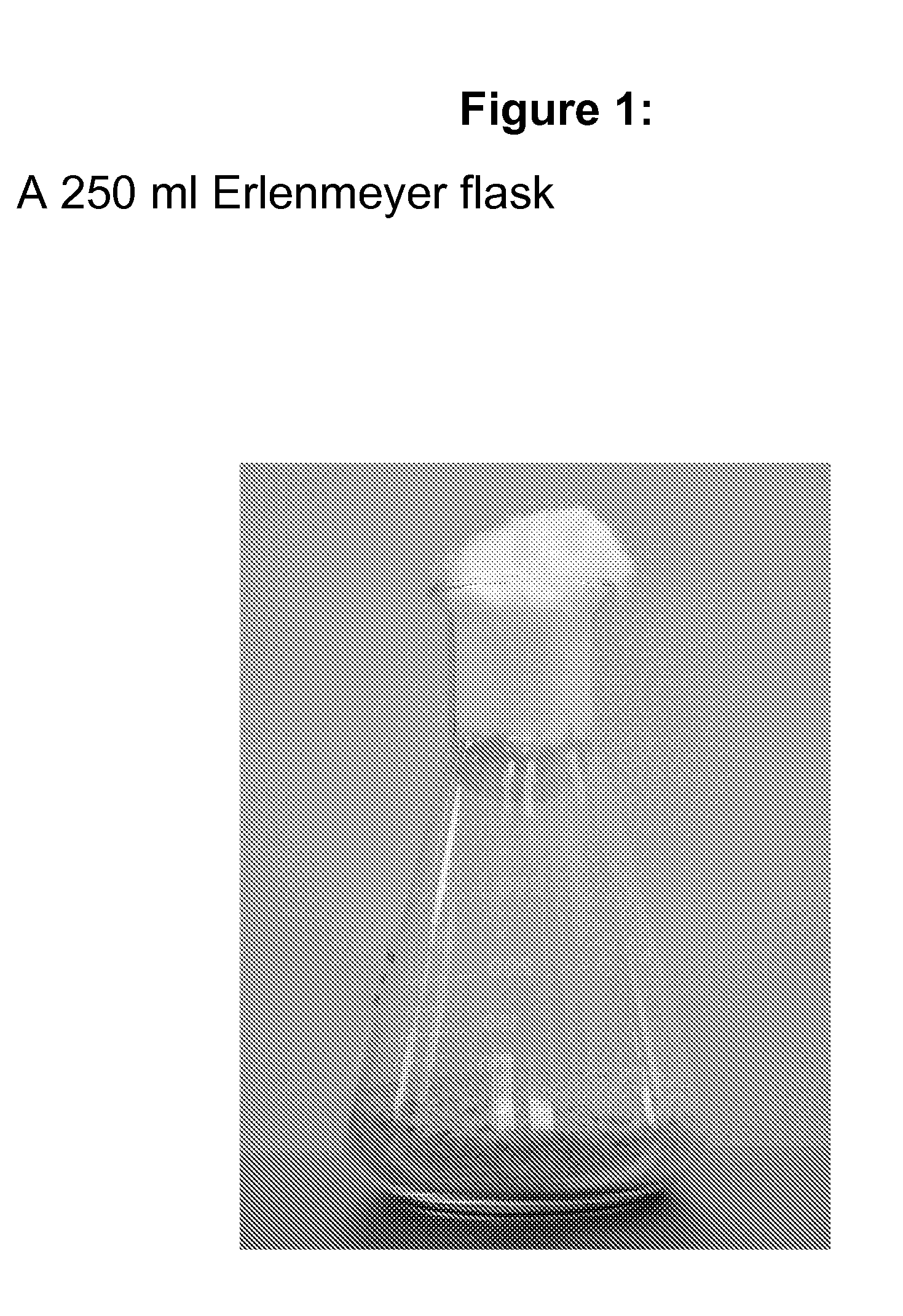Method for mite production
a technology of mites and culturing, applied in the field of culturing and producing mites, can solve the problems of low oxygen permeability, cellophane would therefore not be suitable as a bag material for large-scale cultivation of mites, and do not allow optimal inspection of the growth of mites
- Summary
- Abstract
- Description
- Claims
- Application Information
AI Technical Summary
Benefits of technology
Problems solved by technology
Method used
Image
Examples
example 1
Mite Culturing in Bags
Materials:
[0164]Mite species: D. farinae
[0165]Medium: The medium was a standard mite culturing medium comprising essentially protein hydrolysates, yeast, vitamins and minerals.
[0166]Bag: A bag for sterilization of materials in an autoclave where one side is made of oxygen permeable paper material and the other side is made of transparent plastic material. The size of the bag is 300 mm (broad)×500 (length)×with a possibility to be extended to a height of 65 mm. The bag is commercially available from Westfield Medical Ltd, UK.
Culturing Method:
[0167]500 g of medium was put in each bag (illustrated in FIG. 5). The medium was seeded with a sample of conventional seed cultures of D. farinae and the bag was thereafter sealed / closed (a closed bag is illustrated in FIG. 3).
[0168]Cultivation took place in a production room at a temperature of 23° C. (±2°) at a relative humidity (RH) of 80% (±5%).
[0169]Using a stereoscopic microscope the maturity of the mite culture was ...
example 2
Mite Culturing in Flask—for Comparison
[0177]Flask: 250 ml Erlenmeyer flask that comprised 30 g medium and was closed with a cotton plug.
[0178]All the mite culturing conditions was identical to the conditions used in bag example 1. The same growth medium, the same growth conditions, the same period of time and the same production room was used.
[0179]The maturity of the mite culture was inspected and when the maturity was considered optimal the culture was harvested.
[0180]The extraction and isolation of allergens were done as in Example 1.
[0181]The allergenic activity was analyzed as in Example 1.
[0182]The results of the allergenic activity analysis were 2563 μg / g Der f 1.
[0183]In this example medium from 600 flasks was used, which means that 600×30 g=18 kg was used for culturing mites. After sieving 710 g was obtained. The total quantity of Der f 1 obtained was 2563 μg×710 g=1.82 g of purified allergen from 600 flasks.
[0184]Accordingly, the allergenic activity per gram of purified me...
PUM
 Login to View More
Login to View More Abstract
Description
Claims
Application Information
 Login to View More
Login to View More - R&D
- Intellectual Property
- Life Sciences
- Materials
- Tech Scout
- Unparalleled Data Quality
- Higher Quality Content
- 60% Fewer Hallucinations
Browse by: Latest US Patents, China's latest patents, Technical Efficacy Thesaurus, Application Domain, Technology Topic, Popular Technical Reports.
© 2025 PatSnap. All rights reserved.Legal|Privacy policy|Modern Slavery Act Transparency Statement|Sitemap|About US| Contact US: help@patsnap.com



